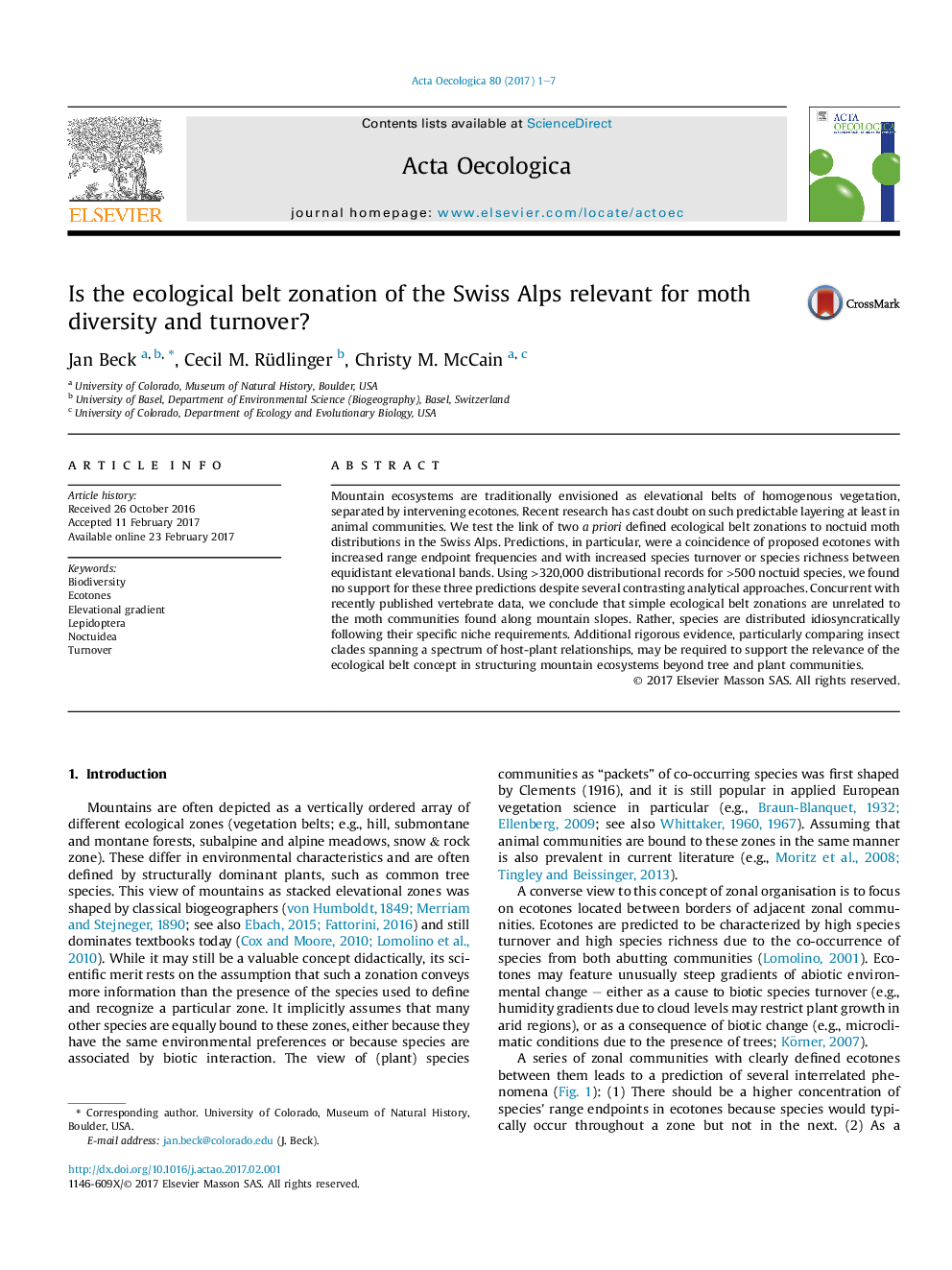| Article ID | Journal | Published Year | Pages | File Type |
|---|---|---|---|---|
| 5742471 | Acta Oecologica | 2017 | 7 Pages |
â¢Ecological zones along elevational gradients are defined by vegetation, but are assumed to be of relevance to animals, too.â¢We test the link of a priori defined elevation zones in the Swiss alps with noctuid moth species communities.â¢Using a variety of predictions, we could not confirm any relationship of elevation zones and moth communities.â¢We question the relevance of ecological zones in mountains to animal communities, pending positive evidence of such a link.
Mountain ecosystems are traditionally envisioned as elevational belts of homogenous vegetation, separated by intervening ecotones. Recent research has cast doubt on such predictable layering at least in animal communities. We test the link of two a priori defined ecological belt zonations to noctuid moth distributions in the Swiss Alps. Predictions, in particular, were a coincidence of proposed ecotones with increased range endpoint frequencies and with increased species turnover or species richness between equidistant elevational bands. Using >320,000 distributional records for >500 noctuid species, we found no support for these three predictions despite several contrasting analytical approaches. Concurrent with recently published vertebrate data, we conclude that simple ecological belt zonations are unrelated to the moth communities found along mountain slopes. Rather, species are distributed idiosyncratically following their specific niche requirements. Additional rigorous evidence, particularly comparing insect clades spanning a spectrum of host-plant relationships, may be required to support the relevance of the ecological belt concept in structuring mountain ecosystems beyond tree and plant communities.
